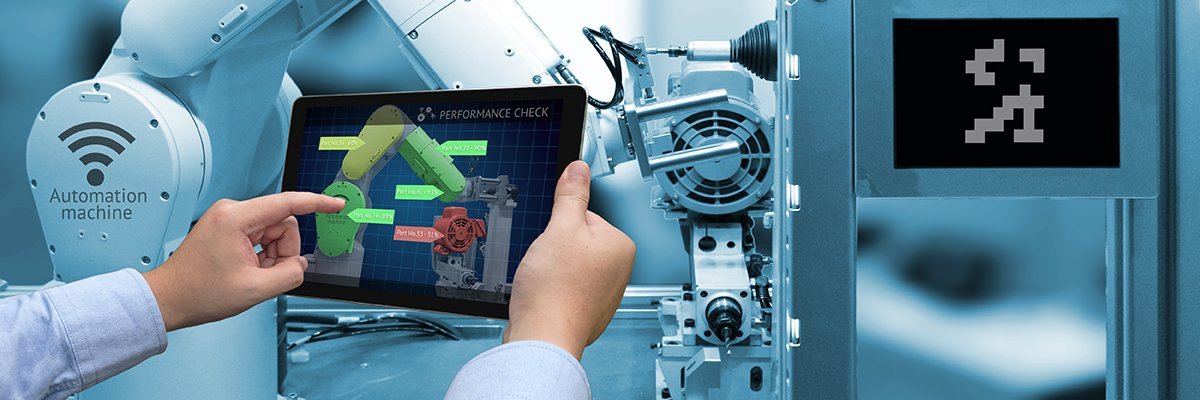
As digital transformation gathers pace in the post-Covid world, especially in manufacturing, businesses have the task of connecting assets – from thousands of sensors up to massive industrial equipment, and across processes and systems using private wireless 4.9G/5G networks. To help with this task, Nokia has launched four third-party applications for MX Industrial Edge (MXIE).
The tech provider believes asset-heavy industries can accelerate their digital transformation and benefit the most from the ecosystem-neutral approach of its operational technology (OT) edge, which taps into innovation from digitisation enablers which help enterprises connect, collect and analyse data from OT assets on what it says is a “robust and secure” on-premise edge.
The applications also take advantage of the graphics processing unit (GPU) capability on the recently upgraded technology, which comprises an on-premise OT edge service that helps process data closest to the source in real time while retaining data sovereignty. The new version, announced in February 2023, included the introduction of a high-performance, high-capacity infrastructure platform from Dell Technologies, beginning with the Dell PowerEdge XR11 server to further increase the processing power of the MXIE to handle the most demanding and complex workloads.
It introduced physical GPU support with an NVIDIA A2 Tensor Core GPU designed to enable artificial intelligence (AI) inference acceleration, that is accelerating the process of using a trained neural network model to make a prediction. This could, said Nokia, unlock business-critical use cases that rely on real-time monitoring of video feeds and alerts using applications which use AI for quality assurance and video analytics offerings for mission-critical applications.
The apps are designed to help enterprises overcome some of the most significant challenges they face in their digital transformation journey. This includes the collection, integration and analysis of all types of data – including video – from disparate systems, sensors and data silos, and having the certainty that sensitive intelligence is protected once shared with other cloud ecosystems. Nokia says use cases are transformative, spanning early alerts and anomaly detection, condition monitoring, preventive and predictive maintenance, digital twins, and more – all of which help improve operations and increase return on investment.
Additions to the Nokia Industrial Application Cataloge include Litmus Edge, an industrial IoT (IIoT) edge platform that provides a holistic, real-time view across the enterprise with unified data collection, integration, analytics and application enablement. With centralised management of data, applications and machine learning models, this service is designed to unlock intelligence at the edge, enabling applications such as predictive maintenance and condition monitoring. The offering can also create, maintain and import digital twin models, supporting diverse use cases.
The IIoT edge platform collects, connects, integrates and analyses data in motion, that is streaming analytics. Results are delivered to machines, storage systems, other local systems or cloud using pre-built connectors for common systems and services. It facilitates digital twins by creating live loops of streaming data between connected devices and cloud for condition monitoring and more.
Boosting security
To boost security without adding physical hardware to the network, the virtualised Palo Alto next-generation firewall provides advanced security services such as intrusion detection and prevention, deep packet inspection and distributed denial-of-service protection, which are beneficial for the exchange of information between systems, machines and sensors.
The service also includes the Atos Computer Vision platform, which uses AI to provide applications that see use in aiming to improve quality and productivity in manufacturing environments. It uses modern deep learning to detect defects, foreign objects, anomalies or incorrect setups. Enhanced by the MXIE GPU capability, Nokia said enterprises can now quickly deliver models that achieve high accuracy even in challenging conditions.
“These new applications unlock operational technology data from their silos while maintaining sovereignty, which asset-heavy, mission-critical environments require for digital transformation, said Nokia vice-president of enterprise solutions Stephan Litjens.
“As we continue to expand the Nokia Industrial Application Catalog and work with leading ISVs and cloud providers, our ecosystem-neutral approach for MXIE means enterprises can choose best-of-breed applications to support a range of industrial use cases. This ultimately improves efficiency, worker safety and sustainability in our customers’ operations.”
The launch also builds on Nokia’s recently announced partnership with IT infrastructure services provider Kyndryl, which has a focus on developing and delivering industry-leading LTE and 5G private wireless services and Industry 4.0 services to customers worldwide.
Kyndryl’s industrial customers are deploying Nokia private wireless networks to achieve high-performance wireless connectivity and improved industrial operations, and is helping customers to design, deploy and manage end-to-end industrial use cases with a single orchestrated on-premise edge for both private wireless and digitisation enablers, ensuring a quick return on investments.
“We are pleased to expand our partnership with Nokia by integrating some of our customers’ business-critical applications – Litmus Edge and Palo Alto Next Gen Firewall – on the Nokia MX Industrial Edge,” said Kyndryl vice-president of solution management, network and edge practice Chris McReynolds. “Advanced IIoT edge platforms that facilitate a holistic view of enterprise-wide data, along with mission-critical security, are fundamental to enterprises who are seeking to accelerate their digital transformation.”

Comentarios recientes